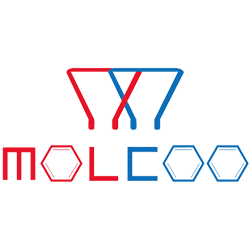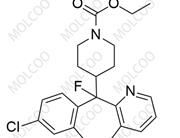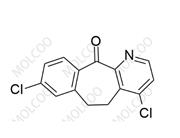Loratadine EP Impurity C

WhatsAPP: +86 17320513646
E-mail: anna@molcoo.com
Product Information
Product Number: L019003
English Name: Loratadine EP Impurity C
English Alias: ethyl 4-(4,8-dichloro-5H-benzo[5,6]cyclohepta[1,2-b]pyridin-11(6H)-ylidene)piperidine-1-carboxylate
CAS Number: 165739-83-3
Molecular Formula: C22H22Cl2N2O2
Molecular Weight: 417.33
Advantages: As the European Pharmacopoeia (EP) impurity C standard of loratadine, it has a clear chemical structure, and its purity has been strictly verified. It has excellent stability and uniformity. In the drug quality testing process, it can be used as a reliable reference substance to ensure the accuracy and repeatability of impurity detection results for loratadine bulk drugs and formulations. It helps pharmaceutical companies and research institutions to strictly control drug quality, meet drug regulatory requirements, and provide a solid guarantee for drug research and development and production.
Applications: It is mainly applied to the quality research and control of loratadine bulk drugs and formulations. It is used to establish and validate impurity detection methods such as high-performance liquid chromatography (HPLC) and liquid chromatography - mass spectrometry (LC - MS). During the research and development of loratadine drugs, it is used to study the source and formation mechanism of this impurity, and optimize the synthesis process to reduce impurity generation. In the production process, it is used to monitor the content of impurity C in products in real-time, ensuring that drug quality meets the European Pharmacopoeia and other relevant quality standards. It can also be used to evaluate the changes of impurities in loratadine drugs during storage and transportation, providing data support for drug stability research.
Background Description: Loratadine is a widely used antihistamine drug, commonly used in the treatment of allergic rhinitis, chronic urticaria and other diseases. In the process of its production and research and development, the presence of impurities may affect the safety, effectiveness, and stability of the drug. To ensure the safety of patients' medication and meet the requirements of drug regulation, strict research and precise control of various impurities in loratadine are required. As one of the key impurities of loratadine, in-depth research on Loratadine EP Impurity C helps to improve the quality standard system of loratadine, enhance drug quality, and ensure the safety and effectiveness of clinical medication.
Research Status: Currently, the research on Loratadine EP Impurity C continues to deepen. In terms of analysis and detection, more sensitive and accurate detection technologies are constantly being explored, such as ultra-high-performance liquid chromatography (UHPLC) and high-resolution mass spectrometry, to achieve precise determination of trace impurities. In the study of impurity generation mechanisms, the root causes of its generation during the synthesis and storage of loratadine are explored in depth by combining reaction chemistry theories and experimental data, so as to optimize process conditions in a targeted manner. At the same time, the research on the impact of this impurity on the performance and safety of loratadine drugs is also gradually underway. Through in vitro and in vivo experiments, its potential risks are evaluated, providing a more comprehensive scientific basis for overall quality control.
NOTE!
We can also customize related analogues and modified peptides including HPLC, MS, 1H-NMR, MS, HPLC, IR, UV, COA, MSDS.
This product is intended for laboratory use only!
WhatsAPP: +86 17320513646
E-mail: anna@molcoo.com
NEW IN STOCK!
The Molcoo Laboratory added drug impurity reference standards, including Baricitinib, Piperazine, Benzylpenicillin, Tranilast and multiple N-Nitroso drug impurities! Now available for immediate delivery!






 China
China


